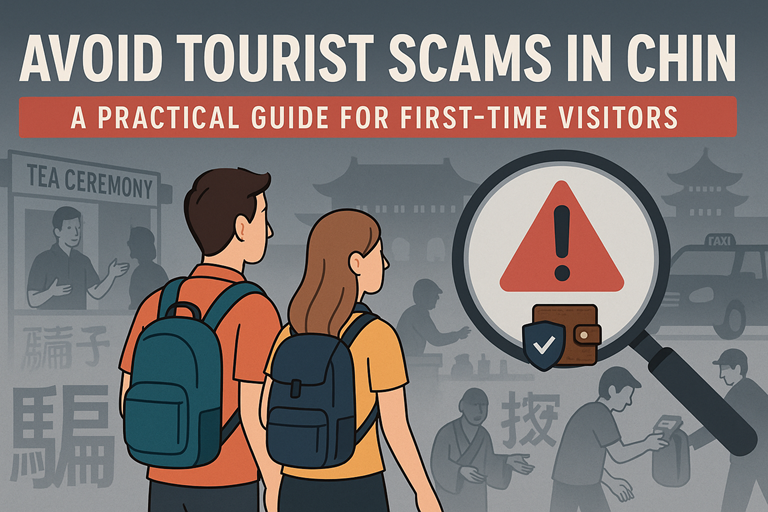Getting Around Chinese Cities: A Comprehensive Guide to Subways, Buses, Taxis & Ride-Hailing Apps
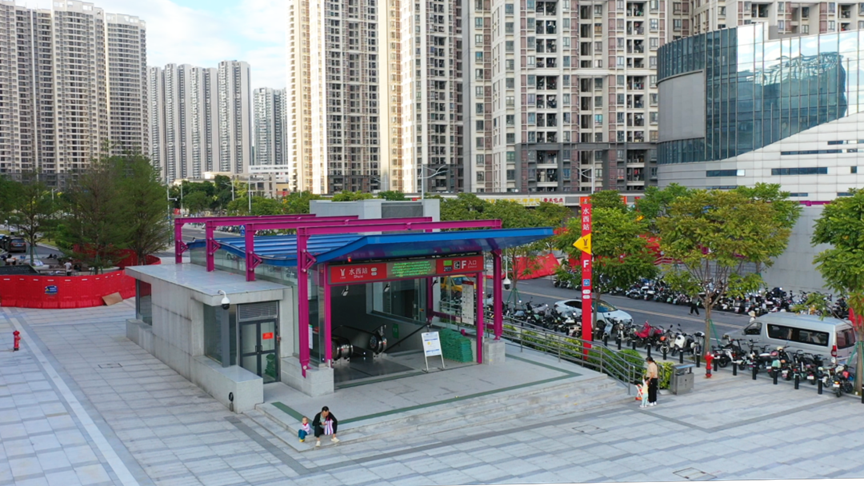
China’s cities offer a variety of efficient transportation options for getting around
Navigating the bustling metropolises of China can seem daunting at first, but the country boasts some of the world’s most advanced, efficient, and rapidly expanding urban transportation networks. Whether you’re in a first-tier megacity like Beijing or Shanghai, or a rapidly developing provincial capital, a combination of modern subways, extensive bus routes, readily available taxis, and ubiquitous ride-hailing apps makes getting around surprisingly manageable, even for non-Chinese speakers. This guide will delve into the specifics of each mode of transport, helping you conquer Chinese city travel like a pro.
I. The Mighty Metro (Subway / 地铁 – Dìtiě)
China’s investment in subway systems is staggering. Most major cities, and many second and even third-tier cities, have clean, modern, and ever-expanding metro networks. This is often the fastest and most reliable way to cover medium to long distances within a city, especially for avoiding traffic congestion.
Why Choose the Metro?
- Speed & Efficiency: Bypasses notorious city traffic, especially during rush hour.
- Coverage: Extensive networks in major cities, constantly growing.
- Cost-Effective: Generally very affordable, with fares typically ranging from ¥2 to ¥10 ($0.30 – $1.50 USD) depending on distance.
- Bilingual Signage: Station names, line maps, and ticket machines usually have English translations. Announcements on trains are often bilingual (Mandarin and English).
- Comfort: Stations and trains are usually air-conditioned (a blessing in summer) and well-lit.
- Safety: Generally very safe, with security checks at every station entrance (x-ray for bags, sometimes a quick body scan).

A typical modern subway station in China with bilingual signage
How to Use the Metro:
Finding Stations:
Look for the distinctive metro logo (often a stylized “M” or a city-specific design) and station names in both Chinese characters and Pinyin/English. Entrances are clearly marked.
Buying Tickets:
Ticket Vending Machines (TVMs): Most common method.
- Usually touchscreen. Select “English” if available.
- Tap your destination station on the interactive map, or select by line and then station.
- The fare will be displayed.
- Pay with Chinese mobile payment (Alipay/WeChat Pay by scanning a QR code), small denomination cash (¥1 coins, ¥5, ¥10, ¥20 notes – some older machines might be more restrictive), or a local transportation card. Machines give change.
Service Counters: Available at most stations, especially useful if you have larger notes or need assistance. Staff may have limited English, but pointing at your destination on a map usually works.
Mobile Apps: In some cities, you can use Alipay, WeChat Pay, or dedicated metro apps to generate a QR code for entry and exit, with the fare deducted automatically. This often requires linking a Chinese bank account or using specific international versions of the apps that support foreign cards (availability varies).
Types of Tickets:
Single Journey RFID Card/Token: A thin plastic card or token. Tap it on the sensor at the entry gate. Keep it safe! You’ll need to insert it into a slot at the exit gate of your destination station.
Transportation Smart Cards (一卡通 – Yīkǎtōng or city-specific names like Beijing’s “Yikatong” or Shanghai’s “Jiaotong Ka”):
- Reusable stored-value cards. Purchase at service counters (often requires a small refundable deposit).
- Can be topped up at service counters or some TVMs.
- Offers convenience (no need to buy a ticket for each journey) and sometimes slight discounts.
- Often usable on buses and sometimes even taxis or ferries in the same city.
- Highly recommended if staying for more than a few days or using public transport frequently.
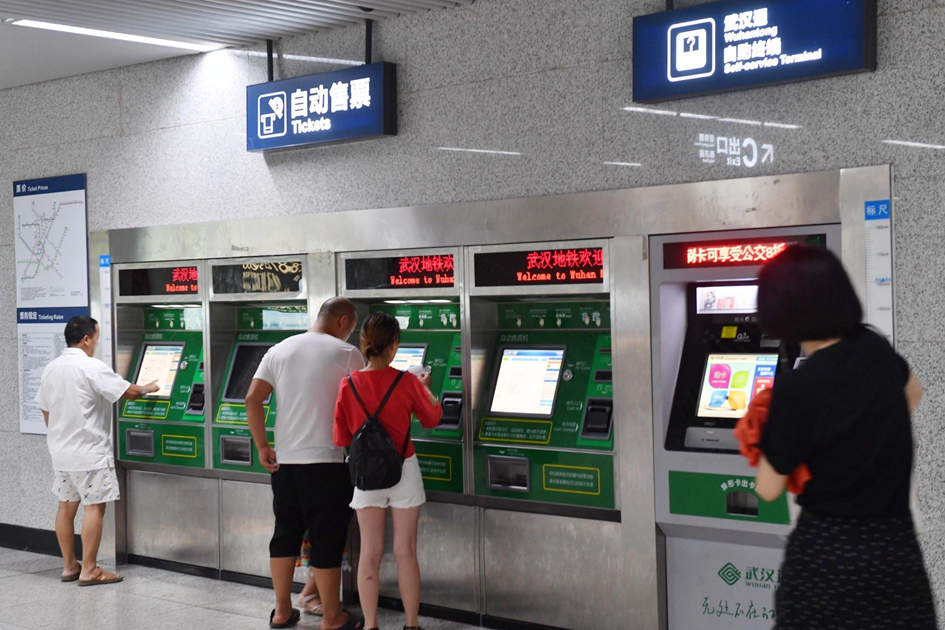
Ticket vending machines often have English language options
Navigating the System:
- Line Colors & Numbers: Each line is color-coded and numbered/named. Follow these signs.
- Direction Boards: Platforms will clearly indicate the line, the direction of travel (listing a few key upcoming stations and the terminal station), and sometimes the next train’s arrival time.
- In-Train Displays & Announcements: Most trains have electronic displays showing the next station and transfer information in Chinese and English. Announcements are also usually bilingual.
- Transfer Stations (换乘站 – Huànchéng Zhàn): Clearly marked. Follow the signs for your connecting line. Transfers can sometimes involve long walks.
- Security Checks: Be prepared for a quick security check of your bags (and sometimes yourself) before entering the ticketed area. Liquids may be inspected.
Etiquette:
- Queue for trains.
- Let passengers off before boarding.
- Move into the carriage to make space.
- Offer seats to the elderly, pregnant women, or those with young children.
- Keep noise levels moderate.
- Eating and drinking are often discouraged or prohibited on trains.
Key Cities with Excellent Metro Systems:
Beijing, Shanghai, Guangzhou, Shenzhen, Chengdu, Xi’an, Nanjing, Hangzhou, Wuhan, Chongqing, Suzhou, and many more.
II. The Extensive Bus Network (公交车 – Gōngjiāo Chē / 公共汽车 – Gōnggòng Qìchē)
Buses are the workhorses of Chinese urban transport, reaching almost every corner of a city, often where metro lines don’t yet extend. They are incredibly cheap but can be more challenging for non-Chinese speakers.
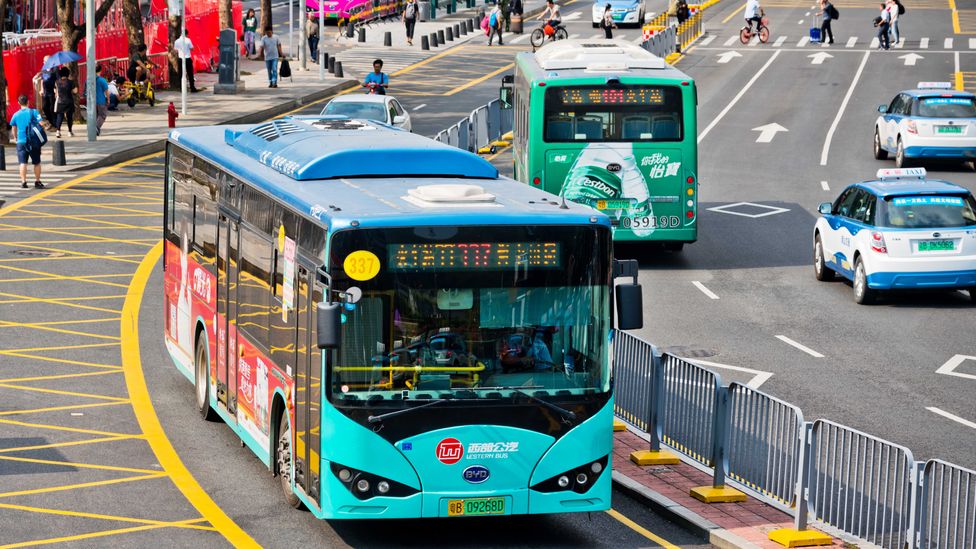
China’s bus networks are extensive and increasingly modern
Why Choose the Bus?
- Cost: Extremely cheap, often a flat fare of ¥1 or ¥2 ($0.15 – $0.30 USD). Air-conditioned buses might cost slightly more.
- Coverage: Vast networks covering nearly all urban and many suburban areas.
- Scenic Route: A good way to see the city at street level (if you’re not stuck in traffic).
Challenges of Using Buses:
- Language Barrier: Bus stop signs and route information are predominantly in Chinese. On-board announcements are often Mandarin-only, though some tourist routes or newer buses in major cities might have English.
- Crowding: Can get extremely crowded, especially during peak hours.
- Traffic: Susceptible to traffic jams, making journey times unpredictable.
- Understanding Routes: Figuring out the correct bus number and direction can be tricky without local knowledge or a good app.
How to Use Buses:
Identifying Routes & Stops:
Navigation Apps (Essential!): Apps like Baidu Maps (百度地图) or Amap/Gaode Maps (高德地图) are invaluable. They provide real-time bus information, route planning, and show stop names in Chinese (which you can then try to match). Google Maps has limited functionality for public transport in China.
At the Bus Stop: Look for signs listing bus numbers and their destinations (in Chinese).
Boarding:
- Buses usually have front-door entry and middle/rear-door exit.
- Signal the bus if it’s your desired route (though they usually stop if people are waiting).
Paying the Fare:
- Exact Change: Many buses require exact change. Drop coins/notes into the farebox next to the driver. Drivers do not give change.
- Transportation Smart Card: Tap your local transport card on the reader. This is the most convenient method.
- Mobile Payment: Increasingly common. Scan a QR code using Alipay/WeChat Pay or a city-specific bus app.
During the Journey:
Pay attention to stops. Use your navigation app to track your location.
Press the “stop request” button (if available) or make your way to the exit as you approach your stop.
Etiquette:
Similar to the metro – offer seats to those in need.
III. Taxis (出租车 – Chūzūchē / 的士 – Díshì – Cantonese, used in some areas)
Taxis are readily available in most Chinese cities and offer door-to-door convenience. They are metered and relatively affordable compared to many Western countries.

Official taxis in China are generally safe and metered
Why Choose a Taxi?
- Convenience: Door-to-door service, good for carrying luggage or traveling in small groups.
- Availability: Generally easy to hail on the street, especially outside peak hours or in less remote areas.
- Directness: Ideal if you know your exact destination and want a direct route.
Challenges of Using Taxis:
- Language Barrier: Most drivers speak little to no English.
- Traffic: Can get stuck in traffic, increasing fare and journey time.
- Hailing Difficulties: Can be hard to find an available taxi during rush hour, shift changes (around 3-5 PM), or bad weather.
- Scams (Less Common but Possible): Unmetered rides, taking longer routes, or counterfeit money in change. Stick to official taxis.
How to Use Taxis:
Hailing a Taxi:
- Look for taxis with their rooftop light on (indicating availability).
- Stand by the roadside and extend your arm.
- Taxi stands are also common near hotels, shopping malls, and transport hubs.
Communicating Your Destination (Crucial!):
- Have the Address in Chinese: The most reliable method. Ask your hotel to write it down, or have it on your phone (e.g., a screenshot from a map app or a hotel booking).
- Use a Map: Point to your destination on a map app.
- Hotel Card: Carry your hotel’s business card with its name and address in Chinese.
- Translation App: Use an app to translate the address or say “Qǐng dài wǒ qù [destination name]” (请带我去 [destination name] – Please take me to [destination name]).
The Meter (计价器 – Jìjiàqì):
Insist on the Meter: Ensure the driver starts the meter (“dǎbiǎo” – 打表). If they refuse or try to negotiate a flat fee (unless it’s a known long-distance airport run with fixed rates), it’s best to find another taxi.
Fares usually consist of a base charge (covering the first few kilometers) and then a per-kilometer rate, plus potential surcharges for night travel, fuel, or waiting time.
Payment:
- Cash: Still widely accepted, but try to have smaller notes.
- Mobile Payment: Many taxis now accept Alipay or WeChat Pay (driver will show you a QR code to scan).
- Transportation Smart Cards: Some cities allow payment with local transport cards.
Getting a Receipt (发票 – Fāpiào):
Always ask for a receipt (“Yào fāpiào” – 要发票). This is important if you leave something in the cab or have a dispute. The receipt will have the taxi’s license number and other details.
Identifying Official Taxis:
Look for a meter, a driver ID displayed on the dashboard, and official taxi company markings. Avoid unmarked or “black” cabs.
IV. Ride-Hailing Apps (网约车 – Wǎngyuēchē)
Ride-hailing apps have revolutionized urban transport in China and are incredibly popular. DiDi Chuxing (滴滴出行) is the dominant player, similar to Uber or Lyft.
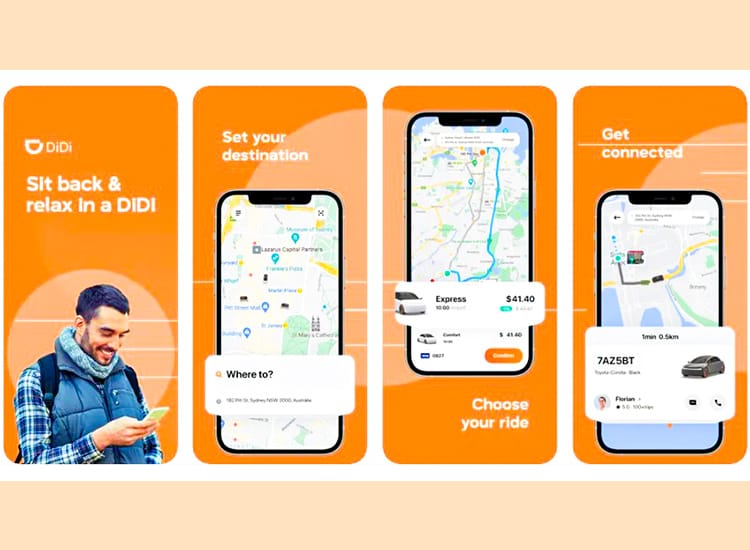
DiDi is China’s most popular ride-hailing app with various service options
Why Choose Ride-Hailing?
- Convenience: Book from anywhere using your smartphone.
- Transparency: See estimated fare, route, and driver details beforehand.
- Cashless Payment: Payment is handled through the app.
- Variety of Services: Options range from budget “Express” cars to premium vehicles and taxis.
- Reduced Language Barrier (Sometimes): Destination is set in the app, and some apps have basic in-app translation for messages with the driver.
Challenges of Using Ride-Hailing:
- App Setup: Typically requires a Chinese mobile number for verification and linking a Chinese mobile payment method (Alipay/WeChat Pay). Some international versions of DiDi or Alipay allow linking international credit cards, but this can be hit-or-miss and may have limitations.
- Connectivity: Requires data or Wi-Fi.
- Surge Pricing: Fares can increase during peak demand.
- Finding Your Driver: Can sometimes be tricky in crowded areas or complex pick-up locations.
How to Use Ride-Hailing (Primarily DiDi Chuxing):
Download and Set Up:
- Download DiDi Chuxing (滴滴出行). There might be an international version available in your app store, or you can use DiDi through Alipay or WeChat mini-programs.
- Account Creation: Usually requires a phone number for verification. A local Chinese SIM is best.
- Payment: Link your Alipay, WeChat Pay, or (if supported) an international credit card.
Booking a Ride:
- Open the app. It will usually auto-detect your location (allow location services).
- Enter your destination (you can type in Pinyin, Chinese characters, or sometimes English for major landmarks).
- Choose your service type (e.g., “Express” – 快车 Kuàichē, “Premier” – 专车 Zhuānchē, or “Taxi” – 出租车 Chūzūchē).
- The app will show an estimated fare and wait time. Confirm your request.
During the Ride:
- The app will show your driver’s details (name, car model, license plate).
- Track the car’s arrival on the map.
- Match the license plate before getting in.
- The driver will follow the app’s navigation.
- Some apps have a basic in-app messaging service with auto-translation features to communicate with the driver if needed (e.g., “I’m wearing a red hat”).
Payment & Rating:
- Payment is automatically deducted from your linked account after the ride.
- You can rate your driver and leave a tip (tipping is generally not customary in China but is an option in some apps).
Other Ride-Hailing Options:
Meituan Dache (美团打车) and Gaode Dache (高德打车 – Amap’s integrated service) are also popular alternatives, often aggregating services from multiple providers.
V. Shared Bikes (共享单车 – Gòngxiǎng Dānchē)
For short distances or the “last mile” from a metro/bus stop, shared bikes (like Mobike, HelloBike, Meituan Bike) are ubiquitous and incredibly convenient.
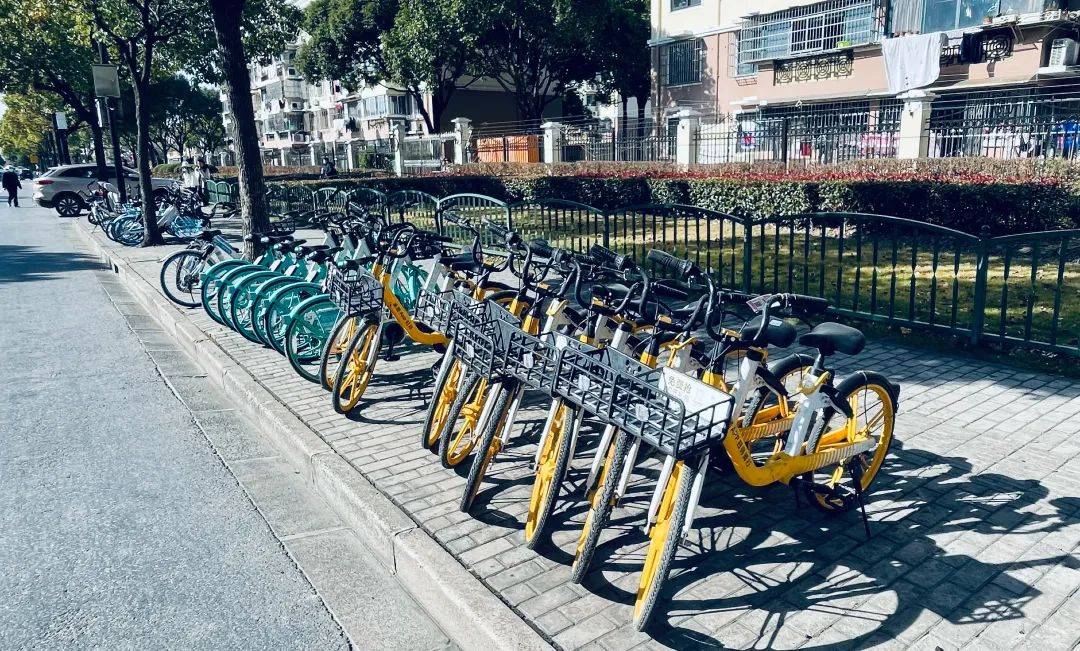
Shared bikes are perfect for short trips and last-mile connections
How to Use:
- Download the respective app (or use them via Alipay/WeChat mini-programs).
- Register and link a payment method (often requires a deposit or pre-payment).
- Scan the QR code on the bike to unlock it.
- Ride to your destination and park in a designated bike parking area (important to avoid fines or issues).
- Lock the bike (manually or via the app) to end the trip. Fares are very low, charged by time.
Tips for Shared Bikes:
- Check the bike condition before scanning (flat tires, broken parts).
- Always park in designated areas to avoid blocking sidewalks.
- Some apps show available parking spots on their maps.
- Be cautious when riding in heavy traffic – Chinese streets can be challenging for cyclists.
VI. General Tips for Getting Around Chinese Cities
Get Connected:
- Local SIM Card/eSIM: Essential for data access to use maps, translation, and ride-hailing apps.
- VPN: If you need to access Google services (including Google Maps, though its China data is limited), Gmail, Facebook, etc., you’ll need a reliable VPN.
Essential Apps:
- Navigation: Baidu Maps (百度地图) or Amap/Gaode Maps (高德地图) are superior to Google Maps in China for accuracy and detail, especially for public transport.
- Translation: Pleco (dictionary), Google Translate (with VPN, download offline language packs), Baidu Translate.
- Payment: Alipay (支付宝) and WeChat Pay (微信支付) are king. Set them up if possible.
- Ride-Hailing: DiDi Chuxing.
Other Useful Tips:
- Learn Basic Phrases: Knowing a few simple Mandarin phrases like “你好 Nǐ hǎo” (hello), “谢谢 Xièxie” (thank you), “这个 Zhège” (this one), “多少钱 Duōshao qián?” (how much money?) can be helpful.
- Carry Your Hotel Address: Always have your hotel’s name and address written in Chinese characters.
- Be Aware of Rush Hour: Typically 7:30-9:30 AM and 5:00-7:00 PM. Public transport will be packed, and roads congested. Plan accordingly or travel off-peak if possible.
- Accessibility: While improving, accessibility for travelers with disabilities can be inconsistent. Newer metro stations often have elevators and tactile paving, but older infrastructure might not.
- Patience is Key: Especially in crowded situations or when facing a language barrier. A smile and polite gestures go a long way.

China offers diverse transportation options to suit every need
China’s urban transportation systems are a marvel of modern engineering and efficiency. While the scale and language can be initially intimidating, armed with the right apps, a bit of preparation, and a willingness to explore, you’ll find getting around Chinese cities to be a smooth and rewarding experience. Embrace the journey, and enjoy the ride!
Enjoyed this article? Consider buying me a coffee to support more content like this!
💖 1 people have clicked to support this article.


